Hyakki Yagyō – The Night When a Hundred Japanese Yōkai Demons Take to the Streets
A Wild Youkai Ride
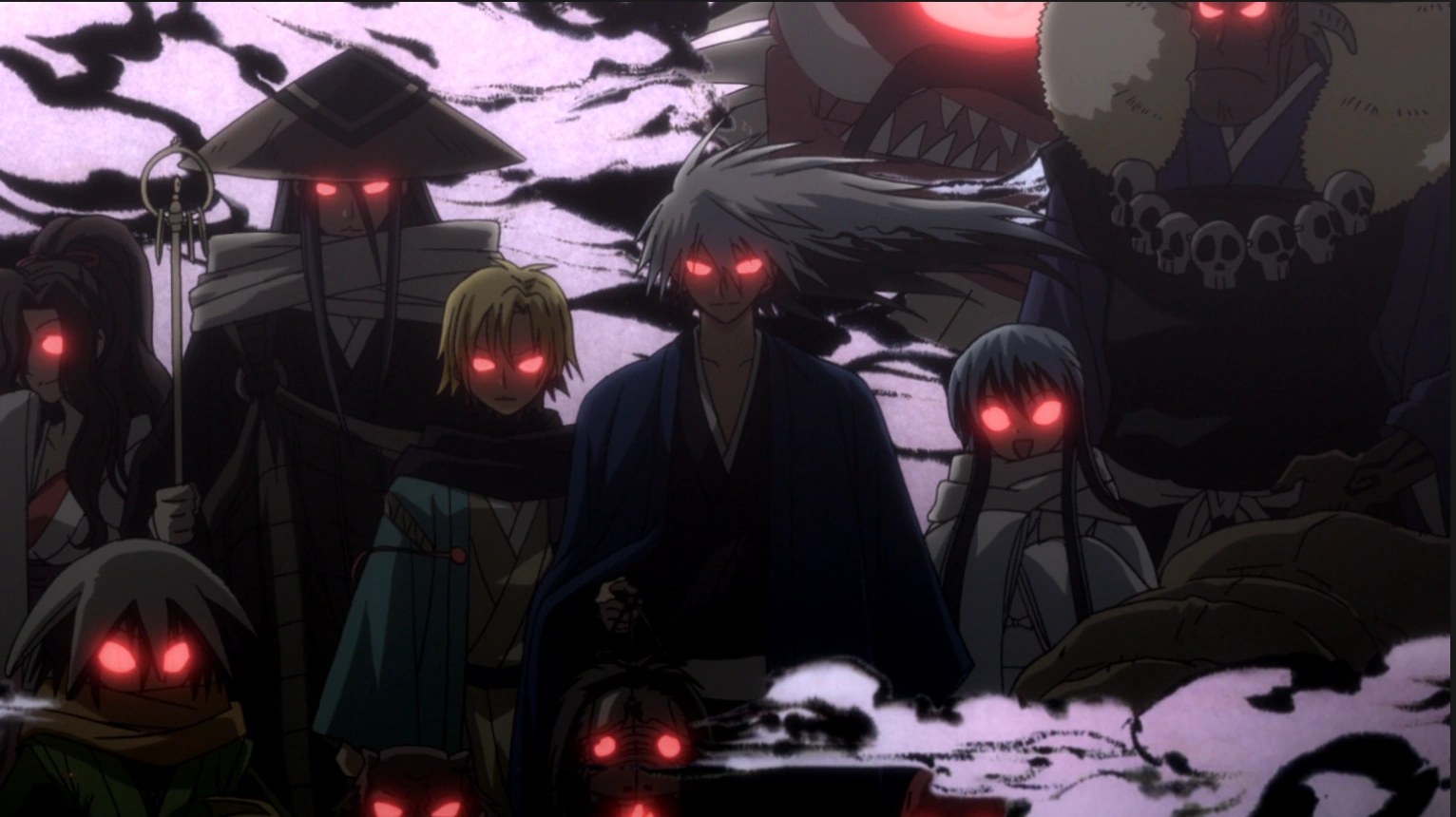
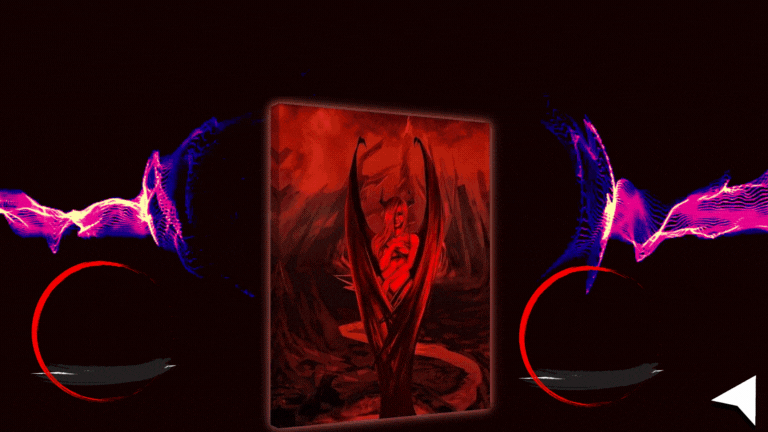
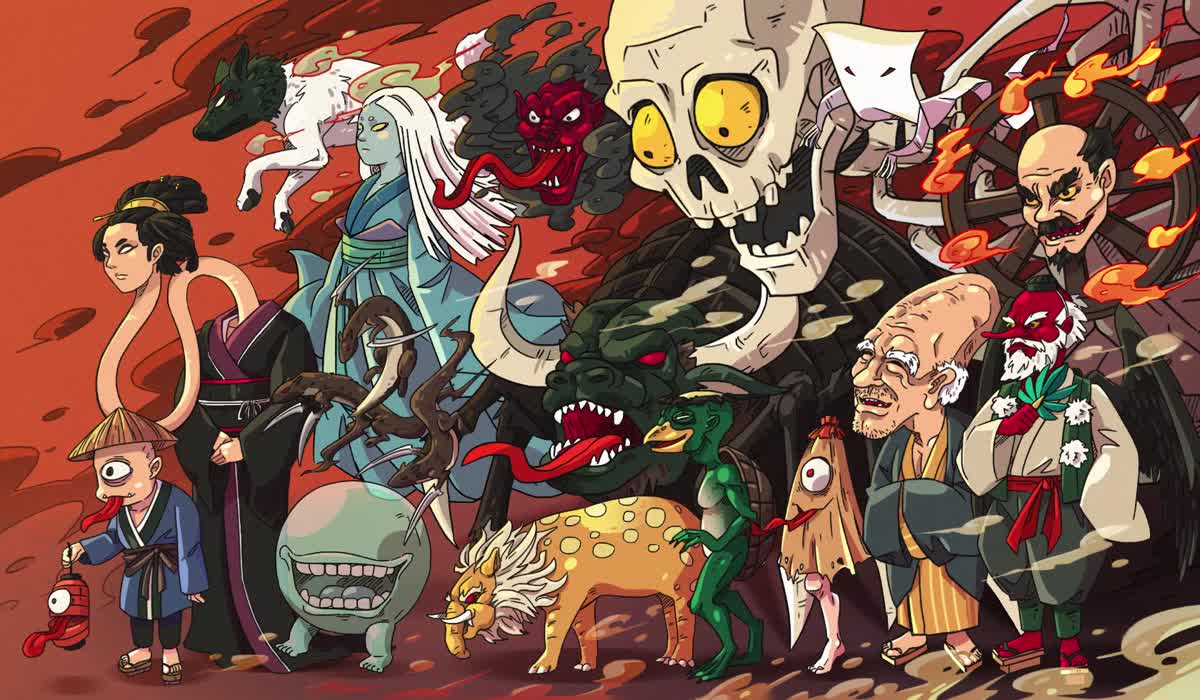
 Etymology and Meaning of the Name
Etymology and Meaning of the Name
Hyakki Yagyō, written in kanji as 百鬼夜行, is a term that in the Polish language is most commonly translated as "The Night Parade of One Hundred Demons". Each character in this sequence carries a coded meaning, whose understanding will bring us closer to the concept of what happens when the gate between our reality and the domain of demons opens.
百 (hyaku) means "one hundred" and in the context of Hyakki Yagyō symbolizes an immense, almost unlimited variety. This number does not so much indicate the exact number of participants in the parade as it underscores the countless multitude of beings that can appear in it, highlighting the richness and complexity of the supernatural world of yōkai.
 鬼 (ki or oni) refers to demons or ghosts, but in the broader context of Japanese culture, this word can be interpreted as enigmatic beings known as yōkai - creatures that lie somewhere between pure evil and joyful malice, often possessing both terrifying and comical traits.
鬼 (ki or oni) refers to demons or ghosts, but in the broader context of Japanese culture, this word can be interpreted as enigmatic beings known as yōkai - creatures that lie somewhere between pure evil and joyful malice, often possessing both terrifying and comical traits.
夜行 (yagyō), consisting of the kanji for "night" (夜) and "to go/pass through" (行), directly refers to a nocturnal march. This combination of words emphasizes the nocturnal, mysterious character of the phenomenon, suggesting a journey or march through the enchanted night.
Together, 百鬼夜行, Hyakki Yagyō is more than just the sum of its parts – it's an invitation to a world where the boundary between what is real and what is supernatural is momentarily blurred. This name not only describes the physical phenomenon of the yōkai parade but also serves as a metaphor for the unfathomable enigma of the Japanese night.
Description of the Phenomenon
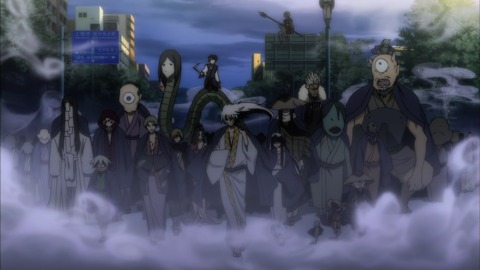
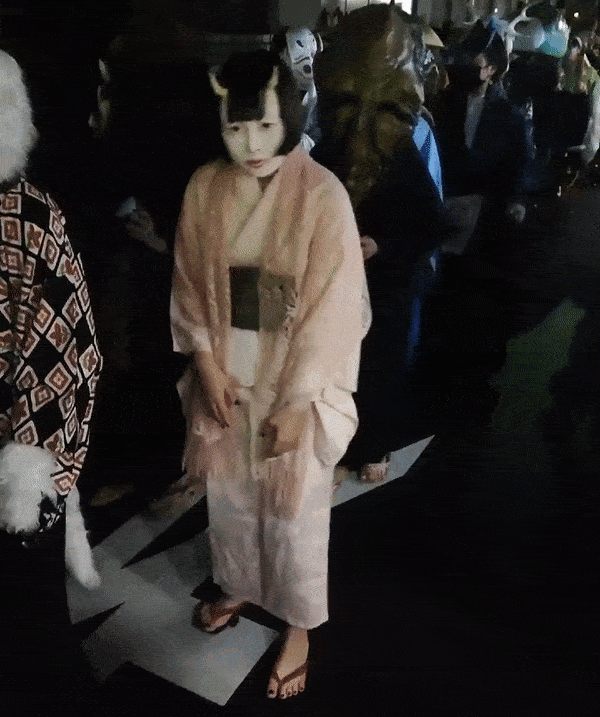
Right behind him, we can observe the tanuki, mischievously deceptive, capable of metamorphosing into everyday objects just to stir up trouble in the lives of simple people. Nearby, glides the Kappa, a water yōkai with a turtle's body and a plate filled with magical water on its head, always ready for pranks and mischief. In the crowd, we can also spot the terrifying Tengu, bird demons with long noses, eagerly waiting to entangle the careless in their intrigues.
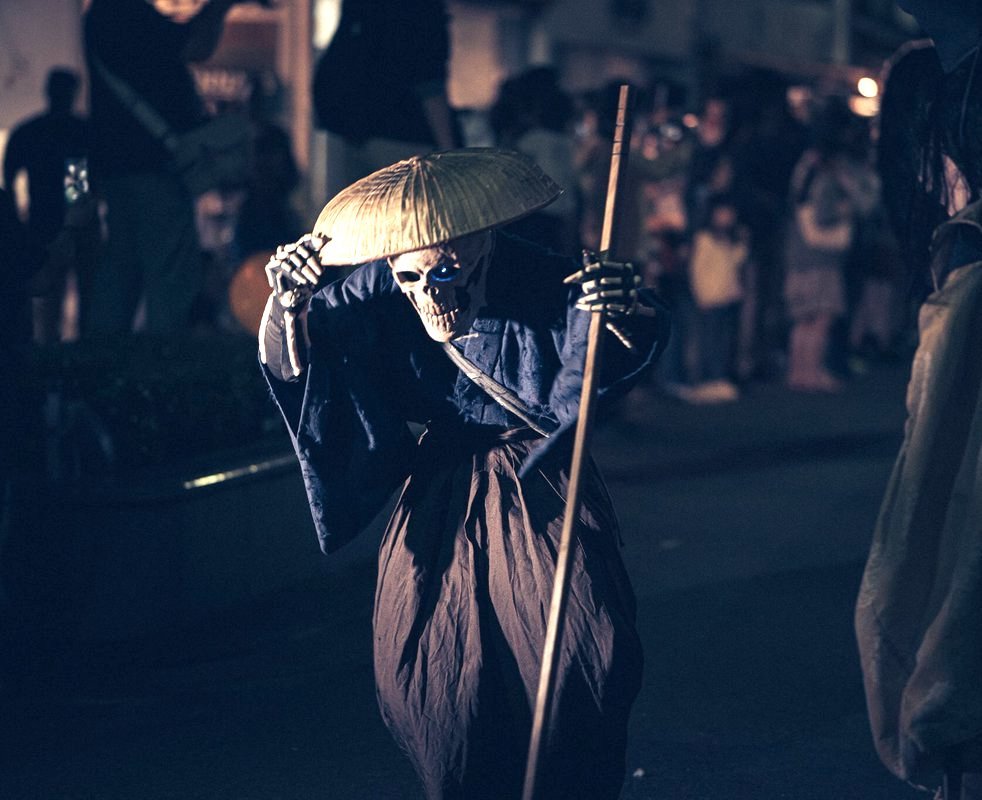
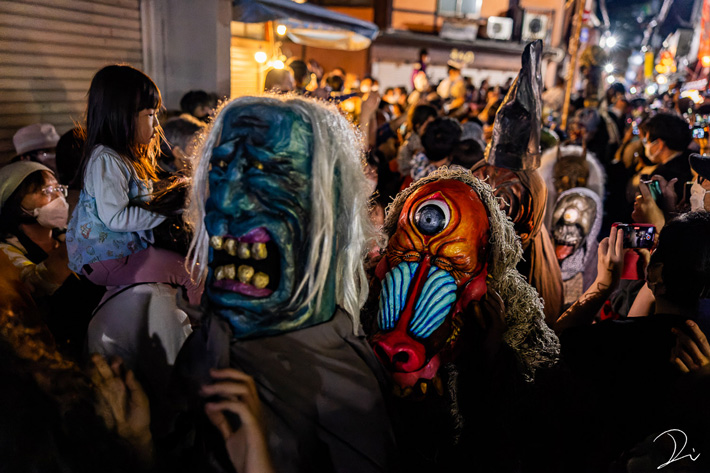
The History of the Demonic Parade
 Mentions of Hyakki Yagyō in Ancient Texts and Accounts
Mentions of Hyakki Yagyō in Ancient Texts and Accounts
The origins of Hyakki Yagyō stretch deep into ancient Japanese history, with the first mentions appearing as early as the Heian period (794-1185), when literature and art began to explore the rich world of beliefs in ghosts and yōkai. Texts such as "Konjaku Monogatarishū" not only recounted encounters with supernatural beings but also began to shape conceptions of the night parades of demons. These early stories laid the foundation for the further development of the Hyakki Yagyō motif, transforming it over time into more organized and complex presentations.
 The Evolution of the Concept Through the Ages: Cultural Influences and Changes in Perception
The Evolution of the Concept Through the Ages: Cultural Influences and Changes in Perception
As time passed and successive historical periods of Japan arrived: Muromachi and Edo, the concept of Hyakki Yagyō evolved, enriched with new elements and reflecting changing beliefs and social values. In the Muromachi period, emakimono (scroll paintings) depicting Hyakki Yagyō became popular, showing an incredible variety of yōkai in dynamic, often humorous scenes. These visual interpretations contributed to the further dissemination and establishment of Hyakki Yagyō in Japanese culture.
In the Edo period, fascination with yōkai and Hyakki Yagyō reached a new level, exemplified by numerous ukiyo-e (woodblock prints) depicting these phenomena. Popular culture of this period, including kabuki theater and literature, often drew from Hyakki Yagyō motifs, transforming them into an important element of entertainment and art.
Key Figures and Events That Influenced the Tradition
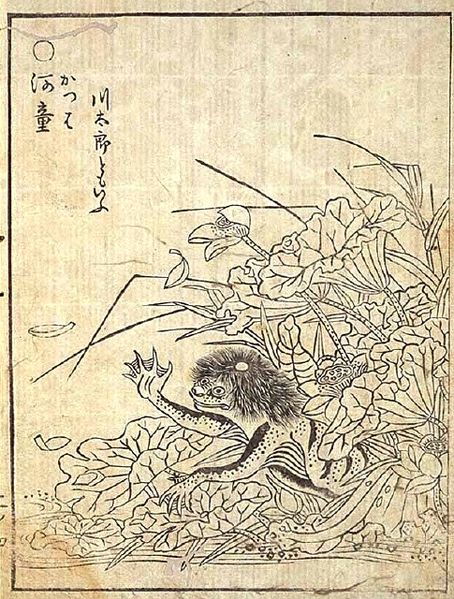
Other important events that contributed to the evolution and popularity of Hyakki Yagyō include the development of printing and ukiyo-e, which enabled the wider distribution and availability of images depicting these nocturnal parades. Additionally, in the Meiji period and later, Western influences and the modernization of Japan opened new avenues for the interpretation and depiction of yōkai, resulting in their presence in new media forms, such as manga and anime.
Today, Hyakki Yagyō continues to evolve, combining traditional motifs with modern interpretations, which testifies to the enduring fascination and significance of these supernatural parades in Japanese culture and art. This phenomenon, reflecting human fears, desires, and imagination, remains incredibly vibrant, dynamic, and inspiring for successive generations of creators and audiences.
 "Gazu Hyakki Yagyō" – How the Parade of Demons Was Seen in the Edo Period
"Gazu Hyakki Yagyō" – How the Parade of Demons Was Seen in the Edo Period
Toriyama Sekien, born in 1712, was a Japanese ukiyo-e artist, Buddhist monk, and art teacher, who became known as one of the first illustrators to document the rich world of yōkai - Japanese ghosts, demons, and other supernatural beings. His work "Gazu Hyakki Yagyō" (Illustrated Night Parade of One Hundred Demons), first published in 1776, marked a breakthrough in the depiction of yōkai in Japanese culture. Sekien, using his skills and knowledge of folklore, created a series of prints that not only illuminated the mysterious world of yōkai but also gave it a new artistic dimension.
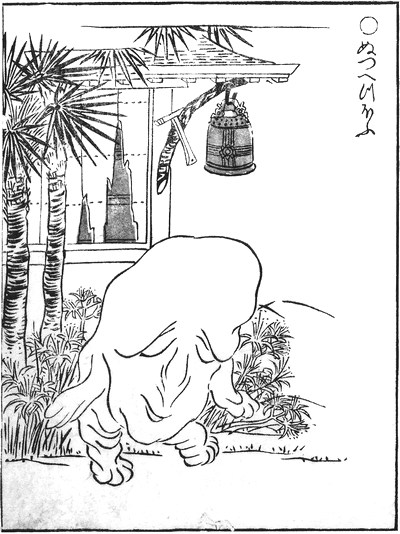
In "Gazu Hyakki Yagyō," one can find a wide range of yōkai, from well-known ones such as tanuki (mischievous animal resembling a raccoon) and kappa (water demon with a turtle's body), to lesser-known and more enigmatic beings, such as Noppera-bō (faceless ghost). Sekien often depicts yōkai interacting with the human world, introducing humorous elements, but also sometimes terrifying ones. His works are characterized by a subtle combination of realism and fantasy, making the viewer feel that the depicted scenes could happen just around the corner.
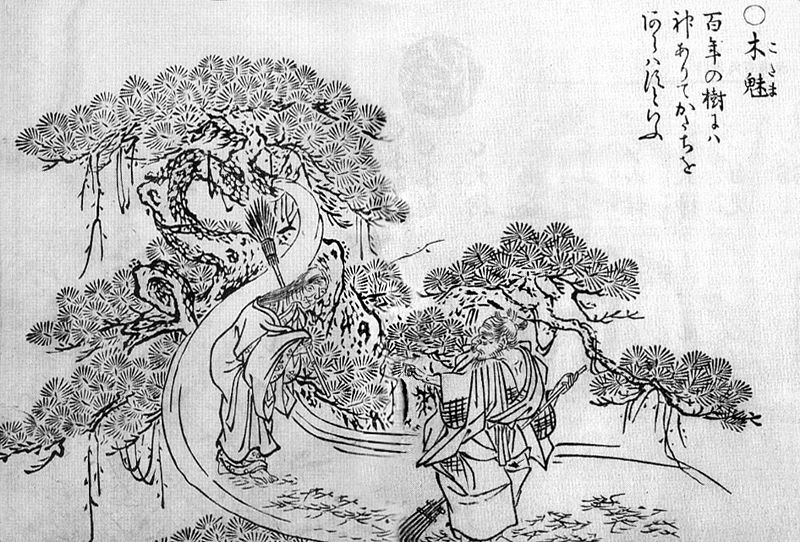
 Hyakki Yagyō Today
Hyakki Yagyō Today
Hyakki Yagyō still plays an important role in Japanese culture, especially coming to life during festivals and events that celebrate this ancient idea. Contemporary celebrations of Hyakki Yagyō represent a fascinating combination of historical beliefs and modern entertainment, attracting both residents and tourists wanting to experience the magic of the night of one hundred demons.
Contemporary Hyakki Yagyō: Festivals, Places, Events
 □ Kyoto - Hyakki Yagyō Matsuri: One of the most renowned places for the celebration of Hyakki Yagyō is Kyoto, a city with a rich cultural heritage marked by historical sites. Here, during the summer nights, the Hyakki Yagyō Matsuri takes place, a festival where participants parade in yōkai costumes, traversing the ancient streets of Kyoto. This event is a tribute to the traditions and legends that have shaped Japanese culture.
□ Kyoto - Hyakki Yagyō Matsuri: One of the most renowned places for the celebration of Hyakki Yagyō is Kyoto, a city with a rich cultural heritage marked by historical sites. Here, during the summer nights, the Hyakki Yagyō Matsuri takes place, a festival where participants parade in yōkai costumes, traversing the ancient streets of Kyoto. This event is a tribute to the traditions and legends that have shaped Japanese culture.
□ Sakaiminato - Mizuki Shigeru Road: In Sakaiminato, the hometown of the famous manga artist Mizuki Shigeru, creator of "GeGeGe no Kitaro," there lies a street dedicated to his work. Statues depicting characters from his manga, including many yōkai from Hyakki Yagyō, adorn the street, creating a unique atmosphere. Although it is not a festival in the traditional sense, this place is a living celebration of yōkai, attracting fans from across the country.
 □ Nagasaki - Lantern Festival: In Nagasaki, during the annual Lantern Festival, which takes place in early February, Hyakki Yagyō motifs can be observed among the richly decorated lanterns and performances. The festival, originally associated with the Chinese New Year, has also become an opportunity to explore Japanese yōkai traditions, with Hyakki Yagyō as one of the leading themes.
□ Nagasaki - Lantern Festival: In Nagasaki, during the annual Lantern Festival, which takes place in early February, Hyakki Yagyō motifs can be observed among the richly decorated lanterns and performances. The festival, originally associated with the Chinese New Year, has also become an opportunity to explore Japanese yōkai traditions, with Hyakki Yagyō as one of the leading themes.
□ Asakusa - Asakusa Yōkai Parade: In the Asakusa district of Tokyo, known for its rich history and tradition, an annual yōkai parade is held. Inspired by Hyakki Yagyō, this event attracts participants dressed as various ghosts and demons, who walk through the historic streets, reviving ancient legends in the heart of the modern city.
 □ Contemporary Adaptations
□ Contemporary Adaptations
Contemporary celebrations of Hyakki Yagyō are not limited to festivals and parades. This tradition also comes to life in new media forms - manga, anime, and video games, where the Hyakki Yagyō motif is explored and reinterpreted, blending ancient legends with modern entertainment. These adaptations not only keep the living tradition of Hyakki Yagyō alive but also introduce it to younger generations, ensuring that the night parade of one hundred demons will continue through the next centuries.
The Theme of the Parade of One Hundred Demons in Culture and Art
 Literature
Literature
"Tsurezuregusa" (徒然草, "Essays in Idleness") by Yoshida Kenkō, an essayist living in the Kamakura period and the early Muromachi period (14th century), is an example of ancient Japanese literature that has direct references to Hyakki Yagyō. While citing this work, it is important to emphasize that although "Tsurezuregusa" contains reflections on life, human nature, and aesthetics, and is not a work focused on yōkai or Hyakki Yagyō, within the broad spectrum of topics covered by Kenkō, there are many references to Japanese beliefs and folklore.
 Ukiyo-e and Other Visual Forms Depicting Hyakki Yagyō
Ukiyo-e and Other Visual Forms Depicting Hyakki Yagyō
In ukiyo-e art, Hyakki Yagyō was a popular motif. One of the most famous artists, Toriyama Sekien, in the 18th century created a series of woodblock prints titled "Gazu Hyakki Yagyō" (Pictures of the Night Parade of One Hundred Demons), which depicted various yōkai participating in the parade. These works had a tremendous impact on later depictions of yōkai in Japanese culture.
 Anime and Manga:
Anime and Manga:
"Nura: Rise of the Yokai Clan" (Nurarihyon no Mago), Rumiko Takahashi, 2008 - Manga and anime tell the story of a young boy who is part human, part yōkai, and becomes the leader of the Nura clan, grouping yōkai. Hyakki Yagyō is a key element of the plot.
Movies:
"Yokai Monsters: 100 Monsters" (Yōkai Hyaku Monogatari), 1968 - One of the classic Japanese films that depict the story of Hyakki Yagyō and the confrontation between humans and yōkai.
"The Great Yokai War" (Yōkai Daisensō), Takashi Miike, 2005 - A children's film that modernly interprets the theme of Hyakki Yagyō, showing a young boy fighting against an army of yōkai.
"Pom Poko" (Heisei Tanuki Gassen Ponpoko), Isao Takahata, Studio Ghibli, 1994 - Although not a direct adaptation of Hyakki Yagyō, the film features elements of the yōkai parade, in the context of tanuki fighting for their habitats.
Video Games:
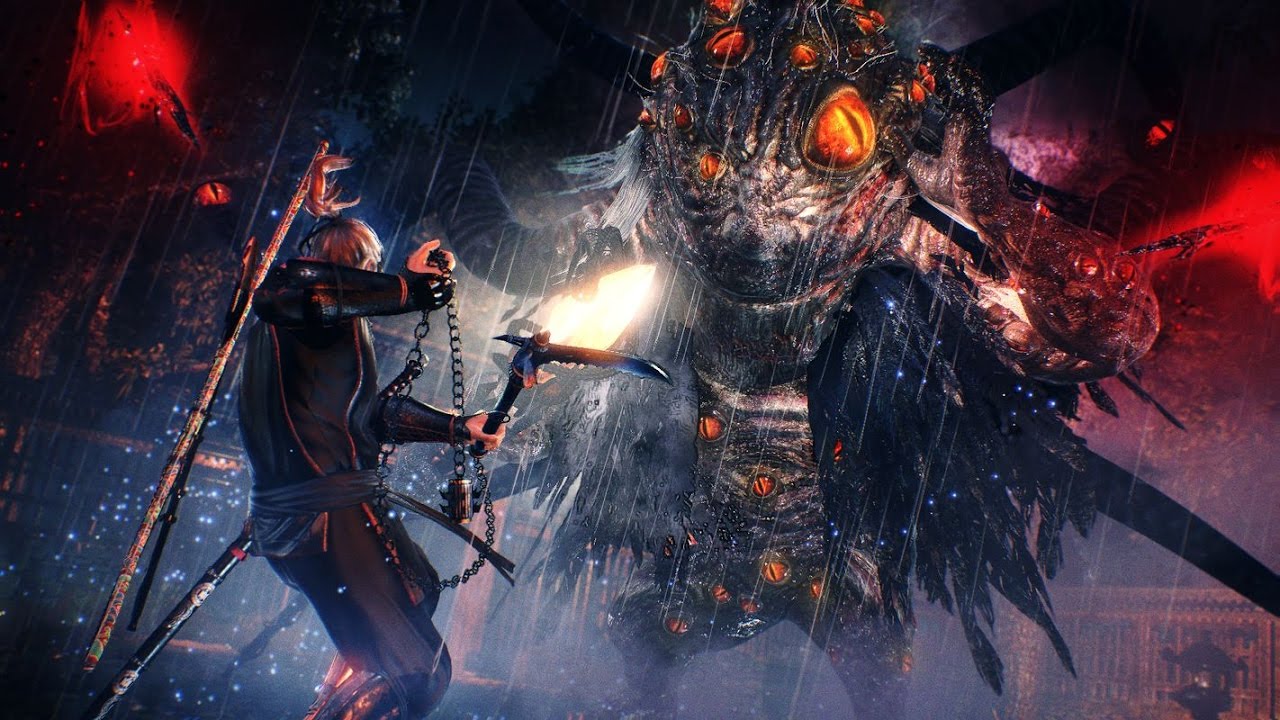
"Yokai Watch", Level-5, 2013 - An RPG series where the player uses a watch to meet, fight, and befriend yōkai. The game includes references to Hyakki Yagyō through missions and special events.
"Ōkami", Clover Studio, 2006 - An action-adventure game where the player controls a deity in the form of a wolf. It utilizes motifs from Japanese mythology and folklore, including elements of Hyakki Yagyō, presenting parades of demons and spirits.
Summary
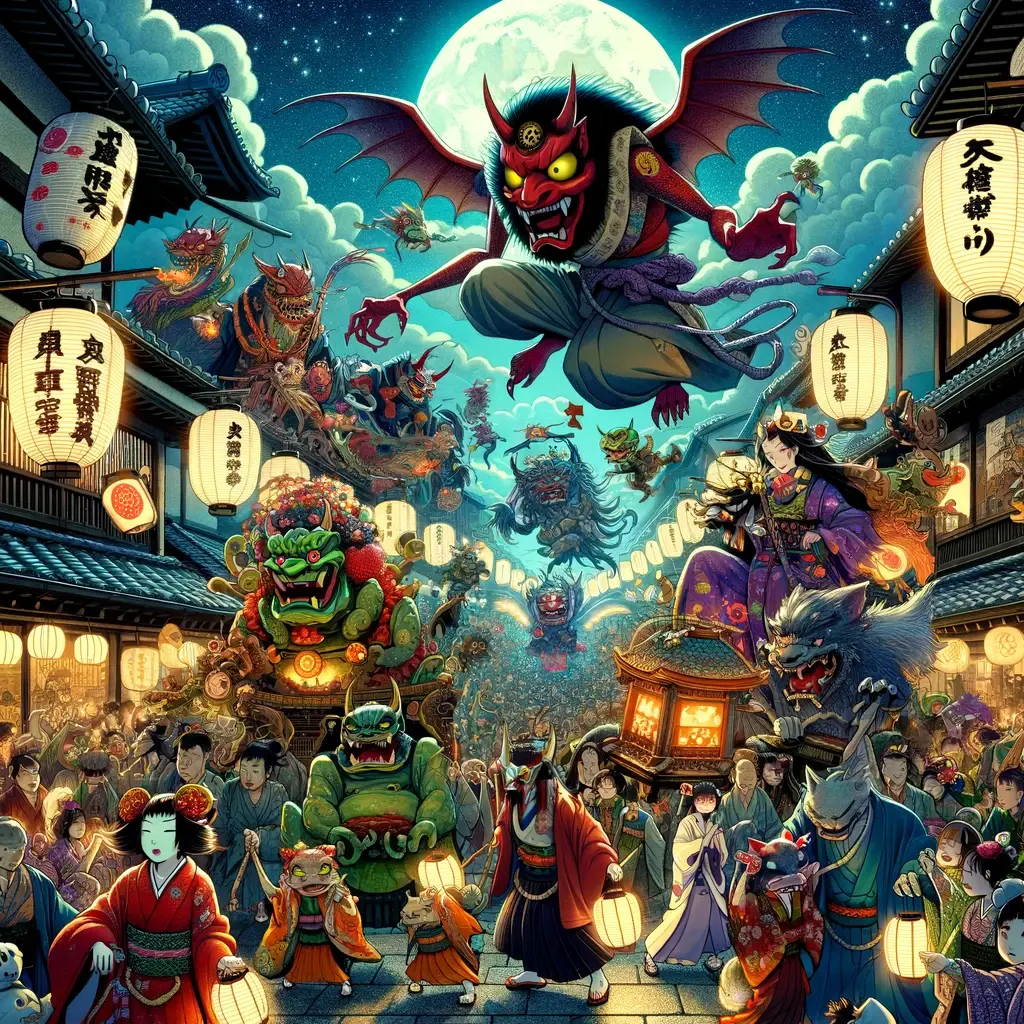
In the sphere of education and tradition transmission, Hyakki Yagyō plays a role much greater than just a source of entertainment or inspiration for creators. It is also a tool for learning about history, culture, and social values, passing on knowledge of rich Japanese mythology to younger generations. 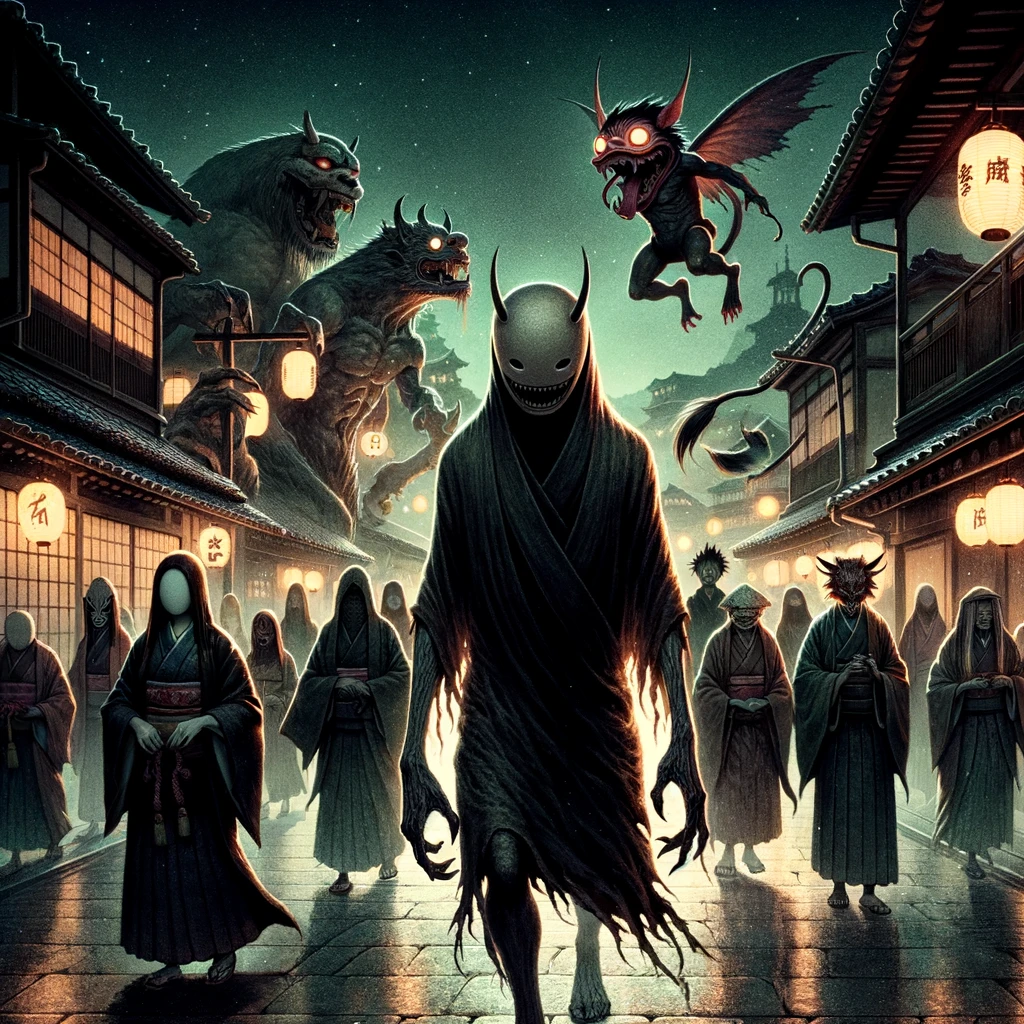
Observing the durability and transformation of the Hyakki Yagyō tradition over time, one cannot help but appreciate its flexibility and ability to adapt to changing cultural and social contexts. Contemporary interpretations, although they may deviate from original beliefs, still draw from deeply rooted motifs and symbolism, showing that Hyakki Yagyō remains a vital part of Japanese culture. For contemporary Japan and the world, this night parade of demons is not only a reminder of the past but also a platform for creativity and innovation, connecting people through shared stories and imagination.
>> SEE SIMILAR ARTICLES:
From Tanabata to Gion Matsuri: Japanese Festival Traditions Then and Now
Kami, islands, chaos and ocean: World Creation Vision in Japanese Mythology
Yōkai and Kami: A Bestiary of Mythological Creatures of Japan in Anime
Vengeful Cat Demons in Japanese Legends: The Sinister Bakeneko
Extraordinary and Bizarre World of Kami: An Overview of Deities in Japanese Mythology
"Strong Japanese Women"
see book by the author
of the page
未開 ソビエライ
An enthusiast of Asian culture with a deep appreciation for the diverse philosophies of the world. By education, a psychologist and philologist specializing in Korean studies. At heart, a programmer (primarily for Android) and a passionate technology enthusiast, as well as a practitioner of Zen and mono no aware. In moments of tranquility, adheres to a disciplined lifestyle, firmly believing that perseverance, continuous personal growth, and dedication to one's passions are the wisest paths in life. Author of the book "Strong Women of Japan" (>>see more)
Personal motto:
"The most powerful force in the universe is compound interest." - Albert Einstein (probably)
Mike Soray
(aka Michał Sobieraj)
未開 ソビエライ
An enthusiast of Asian culture with a deep appreciation for the diverse philosophies of the world. By education, a psychologist and philologist specializing in Korean studies. At heart, a programmer (primarily for Android) and a passionate technology enthusiast, as well as a practitioner of Zen and mono no aware. In moments of tranquility, adheres to a disciplined lifestyle, firmly believing that perseverance, continuous personal growth, and dedication to one's passions are the wisest paths in life. Author of the book "Strong Women of Japan" (>>see more)
Personal motto:
"The most powerful force in the universe is compound interest." - Albert Einstein (probably)
Mike Soray
(aka Michał Sobieraj)
Write us...
Ciechanów, Polska
dr.imyon@gmail.com
___________________
inari.smart
Would you like to share your thoughts or feedback about our website or app? Leave us a message, and we’ll get back to you quickly. We value your perspective!

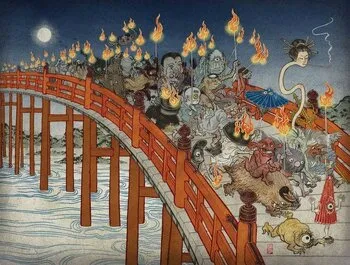 Etymology and Meaning of the Name
Etymology and Meaning of the Name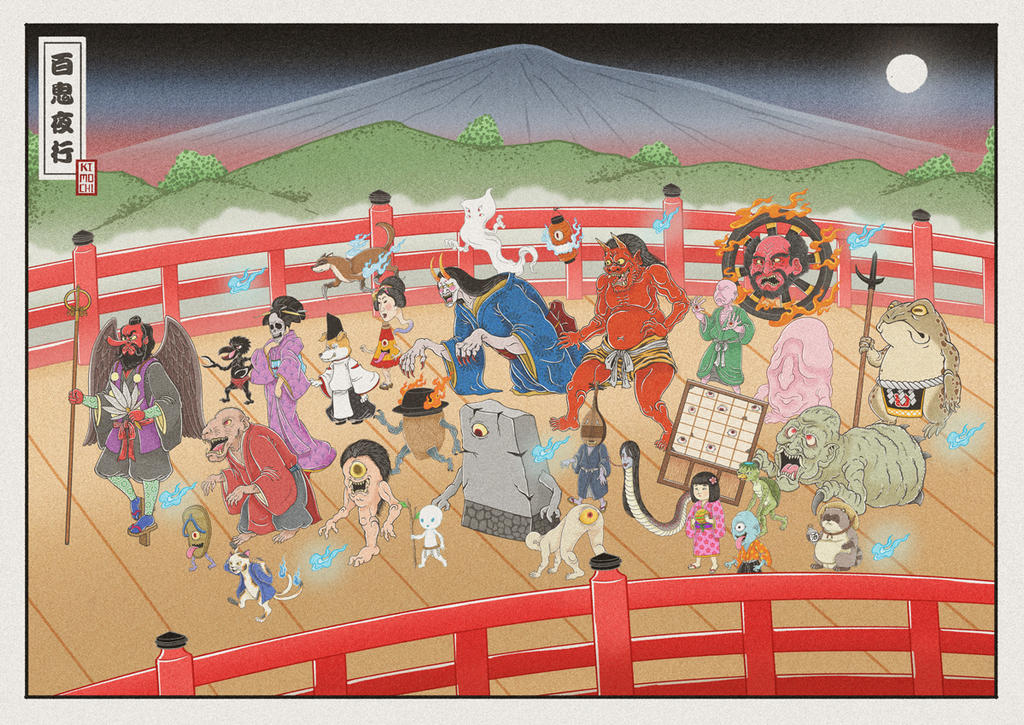 鬼 (ki or oni) refers to demons or ghosts, but in the broader context of Japanese culture, this word can be interpreted as enigmatic beings known as yōkai - creatures that lie somewhere between pure evil and joyful malice, often possessing both terrifying and comical traits.
鬼 (ki or oni) refers to demons or ghosts, but in the broader context of Japanese culture, this word can be interpreted as enigmatic beings known as yōkai - creatures that lie somewhere between pure evil and joyful malice, often possessing both terrifying and comical traits.
 Mentions of Hyakki Yagyō in Ancient Texts and Accounts
Mentions of Hyakki Yagyō in Ancient Texts and Accounts
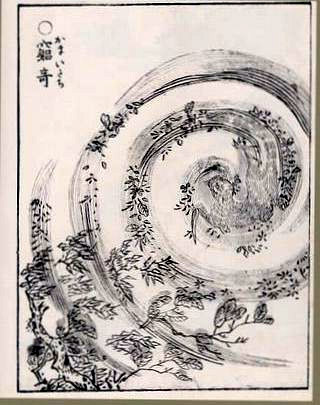 "Gazu Hyakki Yagyō" – How the Parade of Demons Was Seen in the Edo Period
"Gazu Hyakki Yagyō" – How the Parade of Demons Was Seen in the Edo Period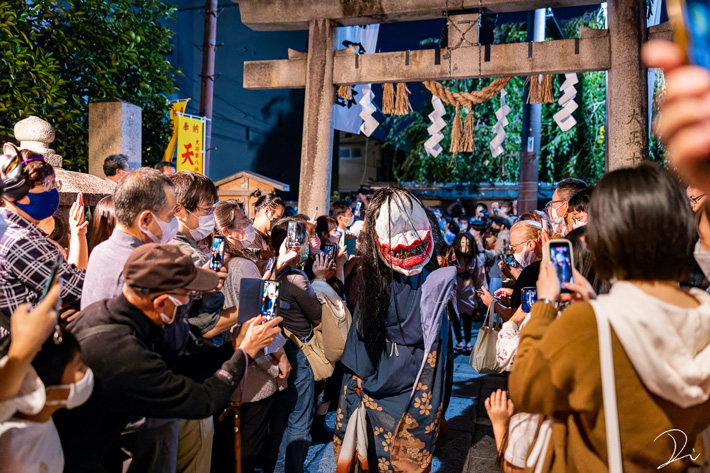 □
□ 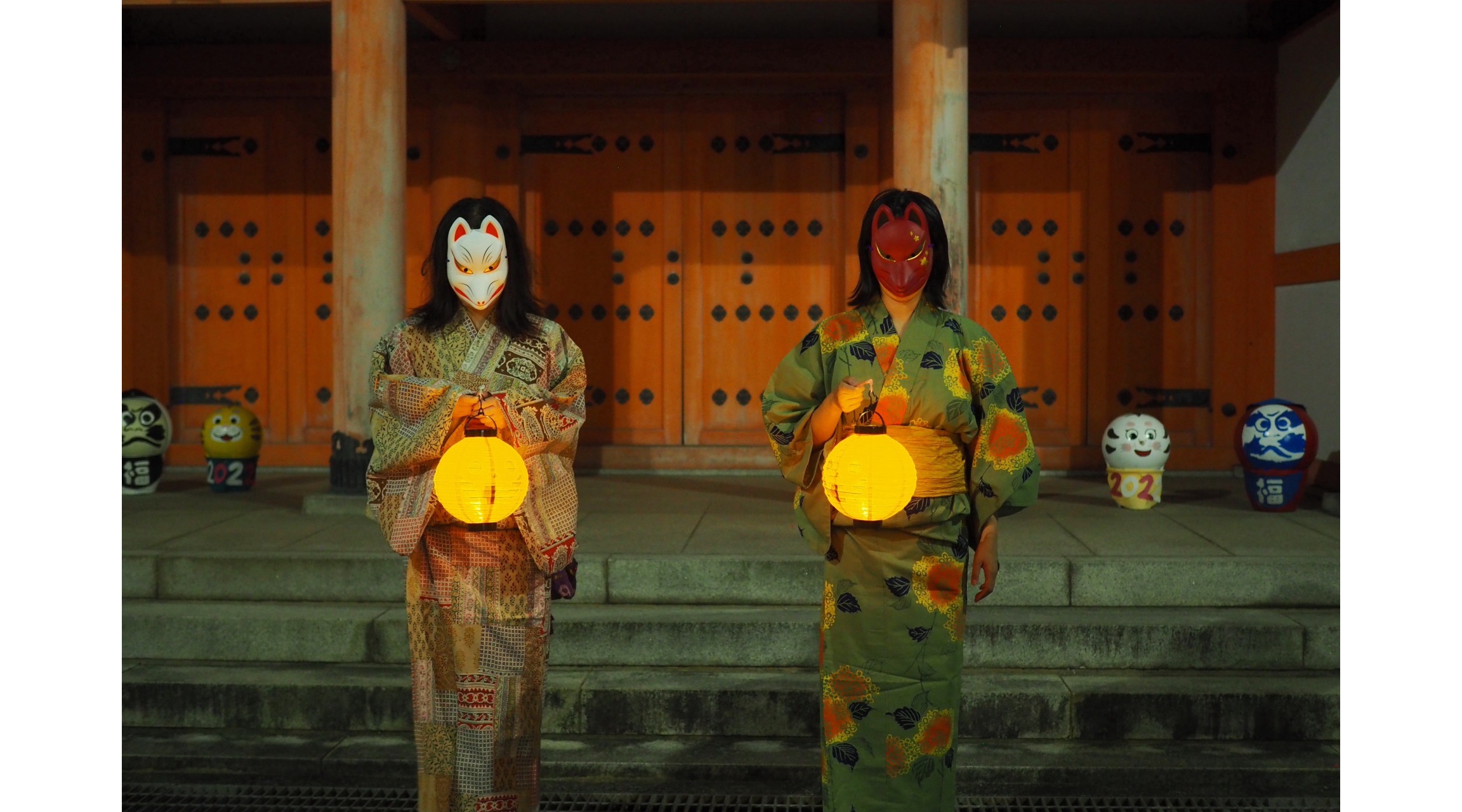 □
□ 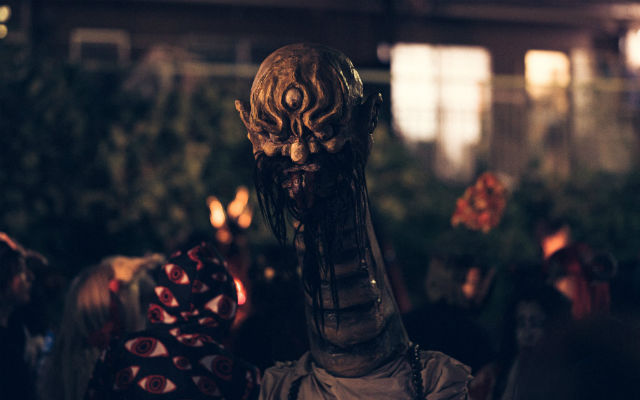 □
□ 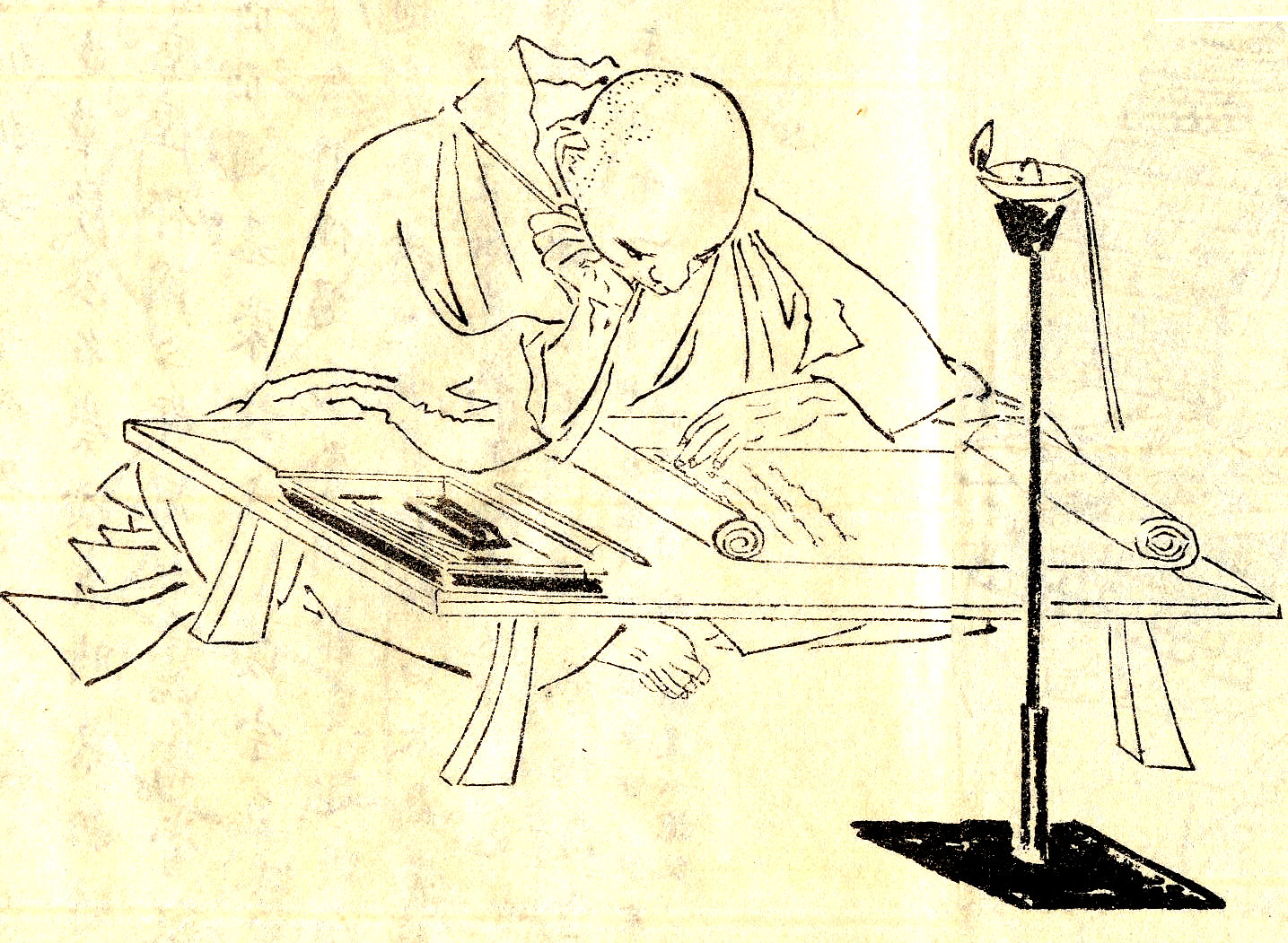 Literature
Literature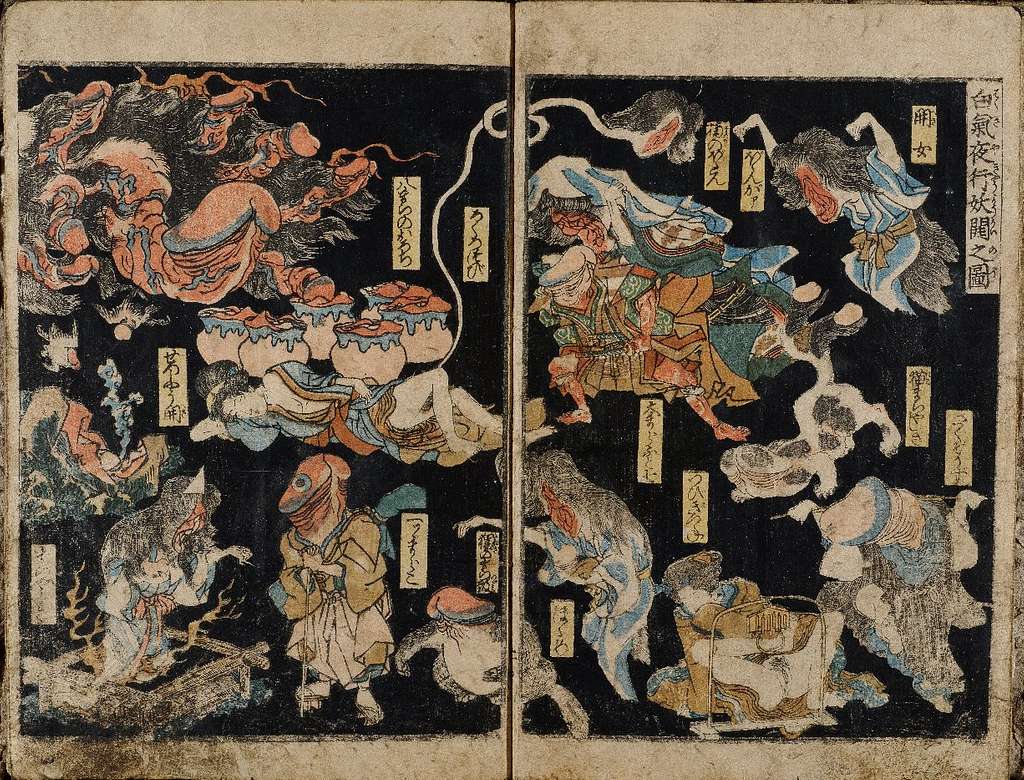 Ukiyo-e and Other Visual Forms Depicting Hyakki Yagyō
Ukiyo-e and Other Visual Forms Depicting Hyakki Yagyō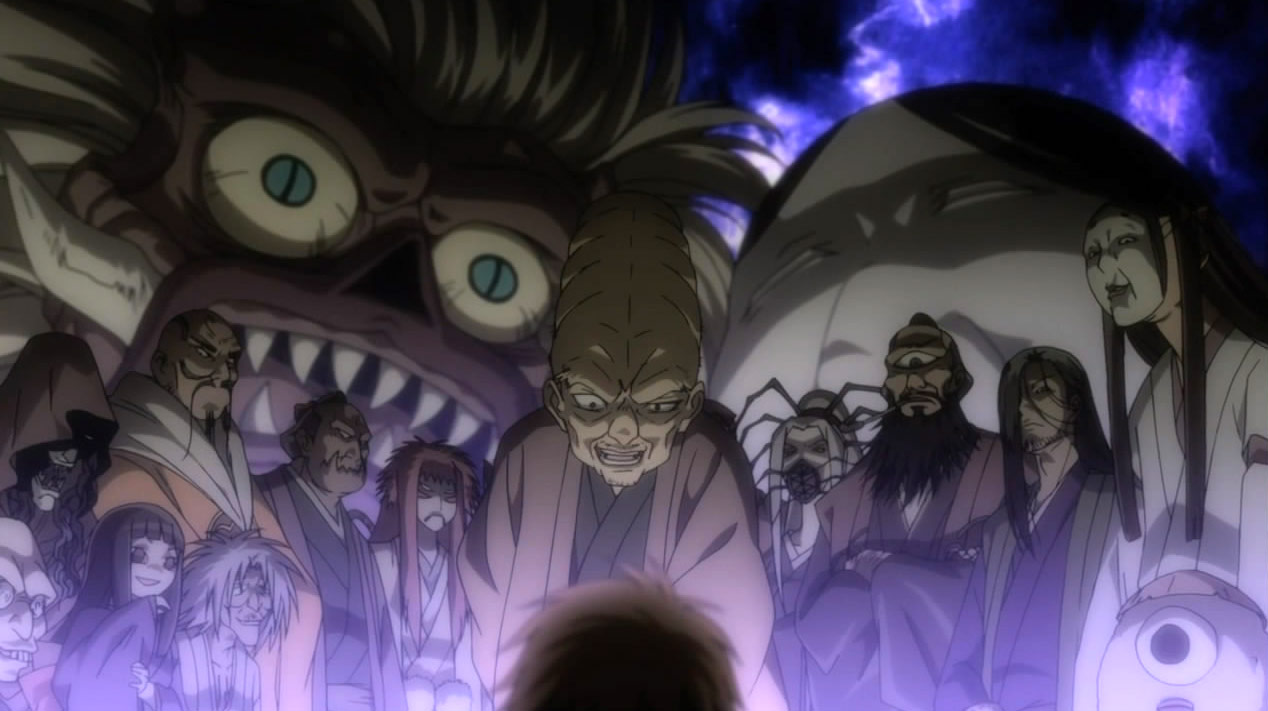 Anime and Manga:
Anime and Manga:
